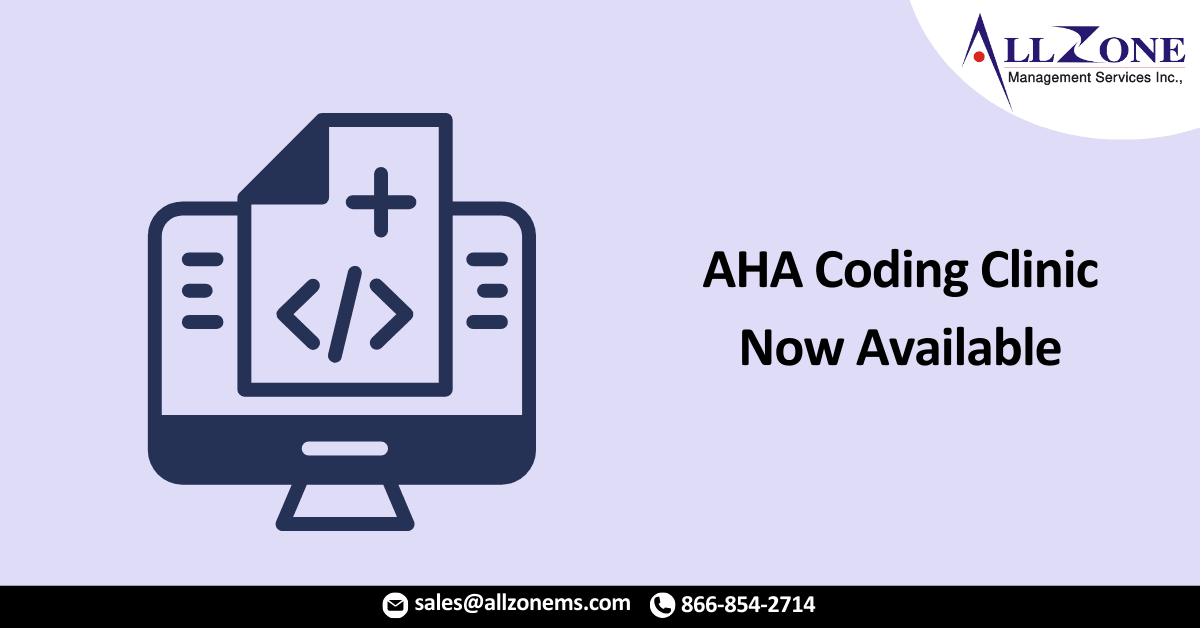Spring brings Coding Clinic Guidance.
Spring has sprung, and that brings the first American Hospital Association (AHA) Coding Clinic on ICD-10-CM/PCS issue of 2022. There are a wide range of topics and guidance. Now that we are receiving biannual coding updates, we begin April this year with some new codes, and some changes that are very important to read and understand.
In light of the continuing COVID-19 pandemic and resultant public health emergency (PHE), we start with the coding changes relating to COVID-19 immunization.
There are three new diagnosis codes:
- Z28.310 – Unvaccinated for COVID-19;
- Z28.311 – Partially vaccinated for COVID-19; and
- Z28.39 – Other under-immunization status.
These codes were presented by the National Center for Health Statistics (NCHS) at the Sept. 14-15, 2021 ICD-10 Coordination and Maintenance Committee meeting, so they are not listed in the 2022 ICD-10-CM code book.
The Official Guidelines for Coding and Reporting added Chapter 1 guidance regarding code Z28.310, Unvaccinated for COVID-19, which may be assigned when a patient has not received at least one dose of any COVID-19 vaccine. Code Z28.311, Partially vaccinated for COVID-19, may be assigned when the patient has received at least one dose of a multi-dose COVID-19 vaccine regimen, but has not received the full set of doses necessary to meet the Centers for Disease Control and Prevention (CDC) definition of “fully vaccinated” at the time of the encounter.
Note that these new codes include very important instructional notes in the Tabular List. Specifically, these codes are not to be used for individuals who are not eligible for the COVID-19 vaccines, as determined by the healthcare provider; this includes patients with medical exemptions.
Another topic in the new issue is the accurate ICD-10-CM code assignment for an “acute right posterior inferior cerebral artery infarction,” often stated or documented as “PICA infarction.” This diagnosis would be coded to I63.89, Other cerebral infarction, and this particular code can be found in ICD-10-CM Chapter 9, Diseases of the Circulatory System.
Some other ICD-10-CM topics in the new issue include:
- Bulging Disc;
- Dextroconvex and Levoconvex type of Scoliosis;
- Placenta Increta;
- Ovarian Cyst Rupture with Hemoperitoneum;
- Underdosing with no impact to the patient’s condition; and
- Sunken Flap Syndrome.
Starting April 1, we also have the following new ICD-10-PCS procedure codes, which are presented in the new Coding Clinic as well:
- XW013V7 – Introduction of COVID-19 vaccine dose 3 into subcutaneous tissue, percutaneous approach, new technology group 7;
- XW013W7 – Introduction of COVID-19 booster into subcutaneous tissue, percutaneous approach, new technology group 7;
- XW023V7 – Introduction of COVID-19 dose 3 into muscle, percutaneous approach, new technology group 7;
- XW023W7 – Introduction of COVID-19 booster into muscle, percutaneous approach, new technology group 7;
- XW0DXR7 – Introduction of fostamatinib into upper GI, external approach, new technology group 7;
- XW0G7R7 – Introduction of fostamatinib into upper GI, via natural/artificial opening, new technology group 7;
- XW0H7R7 – Introduction of fostamatinib into lower GI, via natural/artificial opening, new technology group 7;
- XW023X7 – Introduction of tixagevimab and cilgavimab monoclonal antibody into muscle, percutaneous approach, new technology group 7; and
- XW023Y7 – Introduction of other new technology monoclonal antibody into muscle, percutaneous approach, new technology group 7.
Note that the Tixagevimab and Cilgavimab monoclonal antibody is also known as Evusheld. This drug is used for treatment of COVID-19, but is not a substitute for a vaccine. None of the new procedures are identified as a diagnosis-related group operating room procedure under the Inpatient Prospective Payment System (IPPS) for hospital inpatient coding.
There was a revision made to ICD-10-PCS guideline B4.1c back in October 2022 regarding a tubular body part, which states, “if a procedure is performed on a continuous section of a tubular body part, code the body part value corresponding to the anatomically most proximal (closest to the heart) portion of the tubular body part.” This PCS guideline applies only to vasculature tubular organs, such as arteries and veins, but not other tubular organs, such as esophagus, stomach, or large and small intestines. Be sure to discuss this section of the Coding Clinic with your hospital inpatient coding staff in its entirety for better clarity and understanding.
Some of the other ICD-10-PCS topics within the new issue are:
- Deployment and Aspiration of Thrombus;
- Commissuroplasty Sutures used in Atrioventricular Valve Repair;
- Amplatzer Occluder Device Insertion into the Atrium;
- Intrauterine Cook Balloon Placement;
- Implantation of Matrix-Induced Autologous Chondrocyte; and
- Ganglion Balloon Compression – Percutaneous Approach.
The ICD-10-CM Official Guidelines for Coding and Reporting for FY 2022, updated for April, can be found here.
The ICD-10-CM Tabular Addenda, codes effective April 1, 2022, can be located here.
The new ICD-10-PCS codes and related files can be found at the Centers for Medicare & Medicaid Services (CMS) website.
Remember that the AHA Coding Clinic is an essential part of the coding profession, and is available through a paid subscription. There certainly has been constant change in the clinical coding community since March 2020, and as such, we need to stay abreast of new, revised, and deleted guidelines – and the codes themselves. Also, be sure to sign up for the ICD10monitor Coding Clinic Overview online webinar in April to gain more information and knowledge regarding important ICD-10-CM/PCS coding guidance. Spring is here, so it’s a time of change, with new and interesting coding guidance for all.
For More Information: https://icd10monitor.com/aha-coding-clinic-now-available/

